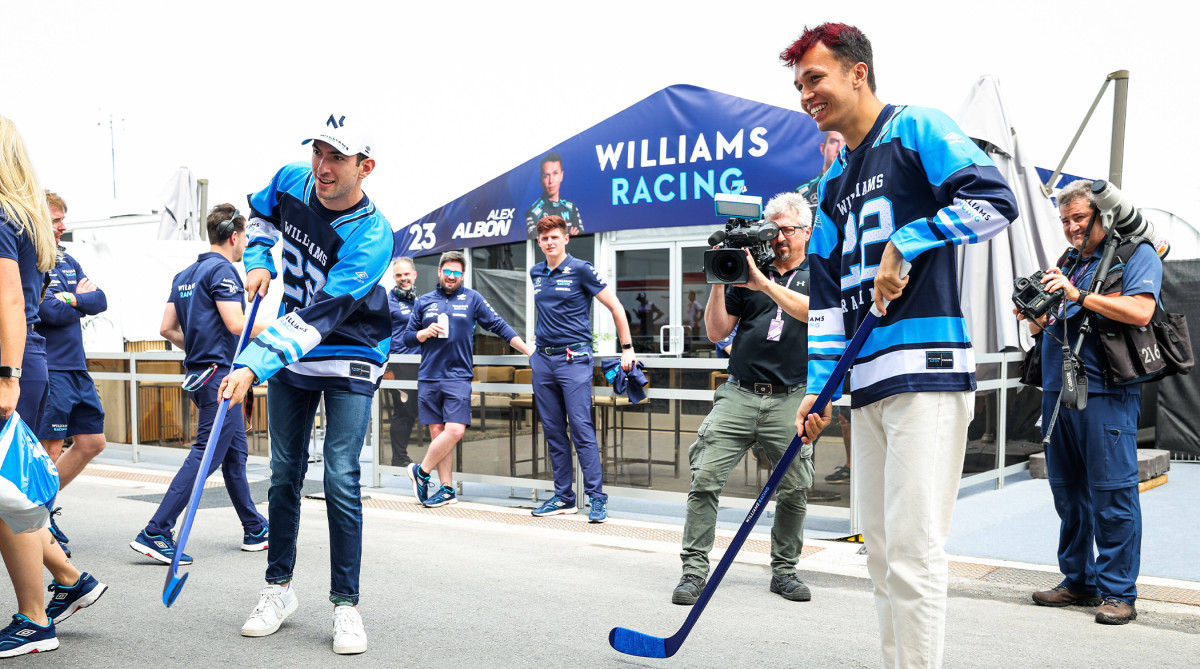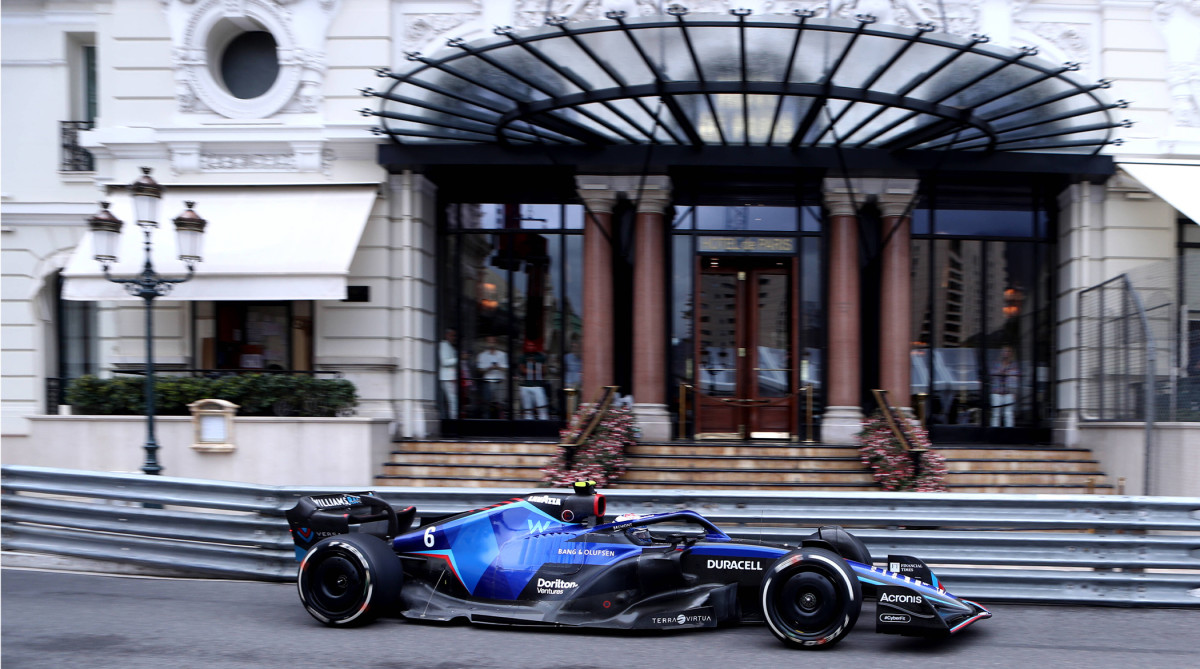Fuel for Thought: Nicholas Latifi on the F1 Canadian GP, Porpoising and More

It’s been a long three years since Formula One has competed in Canada, and this lengthy hiatus was not by choice. The sport didn’t compete for more than 200 days after the COVID-19 pandemic began in March 2020, drastically changing its calendar that season.
While parts of the world began to open up, Canada’s guidelines remained strict, forcing the cancelation of the the 2021 Grand Prix. But now, Formula One returns to Montreal, and this time, it has a Montreal native on its grid.
Nicholas Latifi joined the pinnacle of motorsport during the 2020 season, competing in the 17 races with Williams Racing. The team, which hails from Grove in England, has been Latifi’s home ever since. He’s had a tumultuous career, still seeking his first podium and first F1 win. But at least this weekend, he will have his own cheering section with family in the stands.
Latifi says a majority of his extended family still lives in Montreal (at six months old, his family moved to Toronto). His family has been able to go to one of his F1 races only a handful of times. And after a rough start to the season, he may need that extra boost.
Through eight races, Latifi has yet to finish above 15th. Fans may be quick to attribute it solely to the driver, but the 26-year-old points out that some things are beyond his control.
As F1 prepares to race in Montreal, Sports Illustrated spoke with the Canadian driver about his home race, the aerodynamic phenomenon known as porpoising and a question that he thinks he’s never been asked before.

Fuel for Thought is Sports Illustrated’s exclusive Q&A with Formula One’s biggest names. The following questions and answers have been edited for brevity and clarity.
Sports Illustrated: What stood out to you about [the Azerbaijan Grand Prix in] Baku that did not make the headlines?
Nicholas Latifi: From my weekend, specifically, it was a very disrupted weekend, a weekend basically to forget about and move on from. A lot of things outside of my control and the team’s control. But there was some things as well that were some little mistakes from my side, some little mistakes from the team and just kind of everything contributing, let’s say, to the overall feeling of the weekend that we just want to move on from. Starting off from FP1, we didn’t really get many laps. We had an electronic issue. You don’t want to miss laps on any street track, especially that one, so that was not ideal. And then, you know, the qualifying was a typical Baku qualifying with the yellow flags, red flags, and then you’re just not really getting a representative lap as a result. Then the race starting off with a 10-second stop go penalty, which again not really in my control. And that kind of just ruined the whole race before it even started, unfortunately, because there wasn’t a safety car afterwards. It was the one race where you’re very close to be guaranteed safety cars. I wanted a safety car; there was not so that was a bit annoying.
SI: How do you reset after a weekend like that?
NL: After Baku, I would say it was maybe a bit easier because I had my home race here to look forward to. There’s obviously a lot of excitement coming to Montreal. Once the checkered flag dropped, I was like, ‘Okay, this weekend is done. Let’s just move on from it then.’ But I mean irrespective of the whole race, even when it’s a disappointing weekend, you still try and analyze and understand everything that was relevant for what went wrong to try and take what you need from them and to try and apply all the learnings to the next one. Even though it was a weekend to forget, there’s still a lot of things I learned, a lot of things the team learned, which is important. Then you just very, very quickly switch focus to the next race. When it’s a back-to-back race weekend, you have to do that very quickly because you’re straight back into it. And then you’re just going to start all over again with the weekend preparations.
SI: Looking ahead to Montreal, what should we be watching for? What part of the track do you think is the most challenging and why?
NL: I’ve experienced driving this track in two FP1 sessions before. For me, the corner that stood out as being the trickiest, which I think even if I hadn’t driven the track it would probably still be the one that I would say, would be the last corner in particular. It’s very fast, high speed chicane with the big curbs that you have to kind of bounce the car off of. If you don’t hit them right, it can be very costly. And the fact that you then exit into a wall—not the famous Wall of Champions—that’s a very tricky one to get it right.
SI: One of the hot topics that’s been happening this season, but especially after this past weekend, is porpoising and bouncing and how those two are kind of different. Can you talk a little bit about it and what you’ve been seeing and hearing around the paddock, whether it’s your own experiences or other drivers.
NL: It’s obviously re-entered the sport of Formula One and kind of a much newer issue. We experienced quite a bit of it in Barcelona at preseason testing. First off that it was very, very strange. Like, what’s going on here? Is the car going to break? It felt like the car’s going to take off all of a sudden because it just starts shaking a lot. It was very clear what it was. A lot of teams are still struggling with it more than others, some teams are not. I think a lot of teams have figured out certain solutions of how to mitigate it. Sometimes it’s at the cost of performance. I think every team that has it can get rid of it. That’s without a doubt. But the problem is for some teams to get rid of it, they really have to compromise a lot of performance and downforce, which they obviously don’t want to do. So that’s the compromise. It is not nice when you have it, to say that from experience in our car. It is uncomfortable, it’s annoying, it can make it difficult to spot your braking points, moves you around in your seat, and kind of moves the helmet around on your head. It really just depends.
For example, the Mercedes ones, it looks like a much harsher and stiffer porpoising than we’re seeing that maybe the Ferrari one, which seems like a bit more wavy. That would be my my interpretation of how it looks. It’s an interesting topic. It will definitely not be nice if the car did this for, let’s say, the next four years. There’s the drivers and teams who are in a more competitive position will probably be a bit more silent than the drivers who are suffering from it and teams that are suffering from it.

SI: A simple but deep question—who is Nicholas Latifi?
NL: That is very simple and very deep, wow. Okay. I don’t know if I’ve ever been asked that question before. Who is Nicholas Latifi? So I would say I’m a very simple guy. I mean, to be honest, I do feel I’m a very easy, laid back person. I consider myself very grounded, down to Earth guy. Does me saying that make me seem not down to Earth? My team can confirm for me. Even since being in Formula One, I still find it kind of really ... strange isn’t the right word, but weird when people come up asking me for pictures because I’m just like really? You want a picture or an autograph? O.K. Even though I realize I’m a Formula One driver, I just feel like a normal. I’ve always been a very big, big, big family guy. Family, for me, is one of the most important things. It’s kind of what I was taught and the way I was raised by my parents growing up. Those are the main things. I would definitely say I’m—this is more of a general characterization—but I definitely say I’m more of an introvert than an extrovert. That gives another kind of description.
SI: What is one piece of advice that you would have for the next generation?
NL: Firstly, find what you love to do. If you want to succeed or get to a high level, it will never be easy, and actually, there always be challenges along the way. If it’s something that you love and that you’re passionate about, it becomes so much easier to push through those difficult days and difficult moments when things don’t go right. I know that’s helped me a lot because in motorsport, there’s a lot of very difficult days and there’s many more low moments than high moments. It’s kind of those high moments that obviously are nice and kind of keep you going.
Find what you love and just work really hard at your craft. There’s always going to be commitment and sacrifice involved, and however that sacrifice looks like is going to be different depending on what you’re choosing to pursue.
More Formula One Coverage:
- Red Bull Snags Max Points, Mercedes Finishes Third and Fourth: Three Takeaways From Baku
- Fuel for Thought: Valtteri Bottas on Baku, Coffee, New Chapter With Alfa Romeo
- What Drives Pierre Gasly
- Daniel Ricciardo Is More Than F1’s Country Music–Loving Joker
- Carlos Sainz Faces Pressure in Rise From ‘the Son of’ to F1 Star
